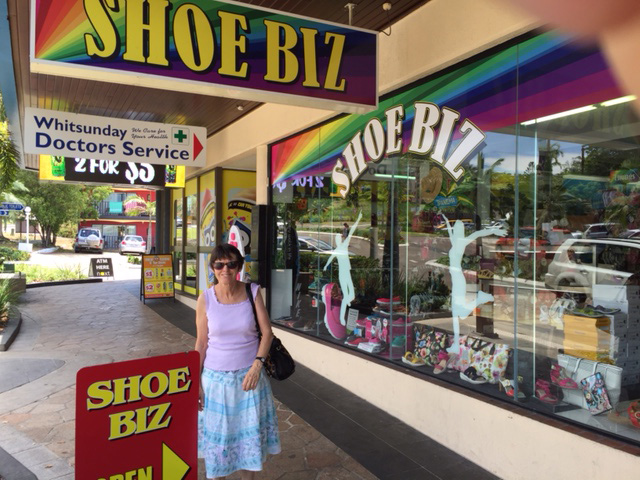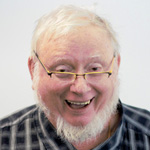One of my "Dad jokes" is that I have trouble talking (due to a longstanding stutter) and my wife, Delma, has trouble hearing (due to a congenital problem), hence 42 years of marriage bliss, I can't talk and Delma can't hear!!
My own father started to become deaf as a ten-year old, when a firecracker went off rather too close to him; it is something the whole family had to learn to cope with when his hearing deteriorated more and more with age. Other members of my extended family have told me of experiences growing up with relatives who were deaf, often after childhood diseases such as measles or mumps.
I have written articles on this theme previously; now there is new research to report. http://www.christiantoday.com.au/article/hearing.loss.is.a.serious.issue/9304.htm
http://www.christiantoday.com.au/article/auslan.class.a.huge.help/7635.htm
In recent years, Delma has learnt AUSLAN (Australian sign language), and her personal Mission involves ministering to the deaf. For example she is a member of a signing choir, who give performances of Christmas carols each year.
I know of several churches who cater for the deaf community, where members of the congregation have learnt AUSLAN and translate the services every week (one of these is ImagineNations Church in Penrith, near Sydney).
How our ears work
The normal, healthy human ear works by converting the changing pressure caused by sound waves in the air, to electrical signals in the auditory nerve, which then register in the brain as particular sounds (coming from a particular direction).
The longer version is this: the three bones in the middle ear are the smallest bones in the human body. They are called the malleus (hammer), the incus (anvil) and the stapes (stirrup). They tap against each other when the air pressure changes as sound waves enter from the outer ear, causing vibrations in the timpanic membrane (ear drum). These vibrations travel down structures in the inner ear, which include the fluid-filled cochlear (a spiral cavity), and activate biochemical cascades, which then cause the nerves to generate electrical signals which are eventually detected and decoded in the brain.
There are also tiny hairs (cilia) that line the structures and tubes, and they wave back and forth and make sure the air pressure waves get to the right place, at the right time.
If any one of the parts of this co-ordinated process is faulty, then the person will have some type of hearing defect. Not everyone affected has the same problem.

Different ways of hearing
I once went to a concert by the Scottish percussionist Evelyn Glennie (now Dame Evelyn) who has gradually become deaf since the age of 8 due to a congenital disorder. She plays the drums in bare feet, so that she can detect the vibrations of the orchestra as well as her own playing. You could say she "hears" with her feet. She has written a description of how she has taught herself to hear with other parts of her body, in response to inaccurate reporting of her condition. This is her blog site: https://www.evelyn.co.uk/?s=hearing+essay
This is similar to what happens when we hear our own voice – part of the sound we hear is due to the vibrations of various bones in our head and face, and that is why the sound of our RECORDED voice sounds so different from what we think we sound like.
Interestingly enough, some animals that live in the sea and on land (such as salamanders and lungfish) have been shown to be able to hear quite well in air, even though they do not have an outer ear, or an inner ear. They somehow use their sense of vibration.
What's new in cochlear implants and other technologies?
The newer versions of the cochlear implant are extremely successful at allowing the outside air waves to communicate with the brain, and therefore allowing deaf people to hear. But they do not do such a good a job as the natural nerve signals.
Researchers at the University of New South Wales have used the impulses generated by the implant to actually deliver gene therapy to the auditory nerves. This means that the nerves themselves can generate the "missing" pieces and grow in a more natural way, so that they can conduct the electrical signals more accurately to the brain, thus being more effective in helping the person to hear.
Not only that, but this technique may be able, in the future, to be used for other disorders where signals to the brain become muddled – such as Parkinson's disease or depression.
But for some people, a cochlear implant will never work. For example, some babies are born without a cochlear or auditory nerve at all. There is nothing to be stimulated by an implant! A new and more intricate technique of stimulating the brain directly, totally bypassing the inner ear, has been tested for safety by a team at the University of Southern California. It has been shown to be safe for children over 12, and now may be used for babies – who will benefit much more if they can hear sound at an earlier age.
In Germany, medical researchers have recently identified some problems that were not easy to detect, prior to modern technology. By knowing what is wrong, they can now find ways to help the affected person to hear better. They are teasing out, at a molecular level, exactly how the nerves convey the signals that allow the brain to detect sound, and also how we know the direction of the sound.
.jpg)
Australia Day Honours for cochlear implant researcher
One of those involved in the research at UNSW, Professor Jim Patrick, won an AO on Australia Day. He is a shy, unassuming researcher who is one of the pioneers of the cochlear implant, responsible for the systems engineering (the software) and the digital aspects of connecting the implant to the nervous system that connects with the brain. He worked with Professor Graeme Clarke in the mid-1970s and then moved to Sydney as part of the Cochlear Tiger Team, where he has helped develop the commercial 10-channel versions of this important medical device.
Since 1981 he has played a key senior management role in the technology areas of the ongoing Cochlear projects, including the marriage of biology and electronics to improve performance of future implants.
The Gospel can be "heard" by all
Fortunately, we don't need to physically "hear" to be able to hear the Word of the Lord, as explained in Hebrews 4:12ESV: "For the word of God is living and active, sharper than any two-edged sword, piercing to the division of soul and of spirit, of joints and of marrow, and discerning the thoughts and intentions of the heart."
 Dr Mark Tronson is a Baptist minister (retired) who served as the Australian cricket team chaplain for 17 years (2000 ret) and established Life After Cricket in 2001. He was recognised by the Olympic Ministry Medal in 2009 presented by Carl Lewis Olympian of the Century. He mentors young writers and has written 24 books, and enjoys writing. He is married to Delma, with four adult children and grand-children. Dr Tronson writes a daily article for Christian Today Australia (since 2008) and in November 2016 established Christian Today New Zealand.
Dr Mark Tronson is a Baptist minister (retired) who served as the Australian cricket team chaplain for 17 years (2000 ret) and established Life After Cricket in 2001. He was recognised by the Olympic Ministry Medal in 2009 presented by Carl Lewis Olympian of the Century. He mentors young writers and has written 24 books, and enjoys writing. He is married to Delma, with four adult children and grand-children. Dr Tronson writes a daily article for Christian Today Australia (since 2008) and in November 2016 established Christian Today New Zealand.
Mark Tronson's archive of articles can be viewed at http://www.pressserviceinternational.org/mark-tronson.html

Dr Mark Tronson - a 4 min video
Chairman – Well-Being Australia
Baptist Minister 45 years
- 1984 - Australian cricket team chaplain 17 years (Ret)
- 2001 - Life After Cricket (18 years Ret)
- 2009 - Olympic Ministry Medal – presented by Carl Lewis
- 2019 - The Gutenberg - (ARPA Christian Media premier award)
Gutenberg video - 2min 14sec
Married to Delma for 45 years with 4 children and 6 grand children